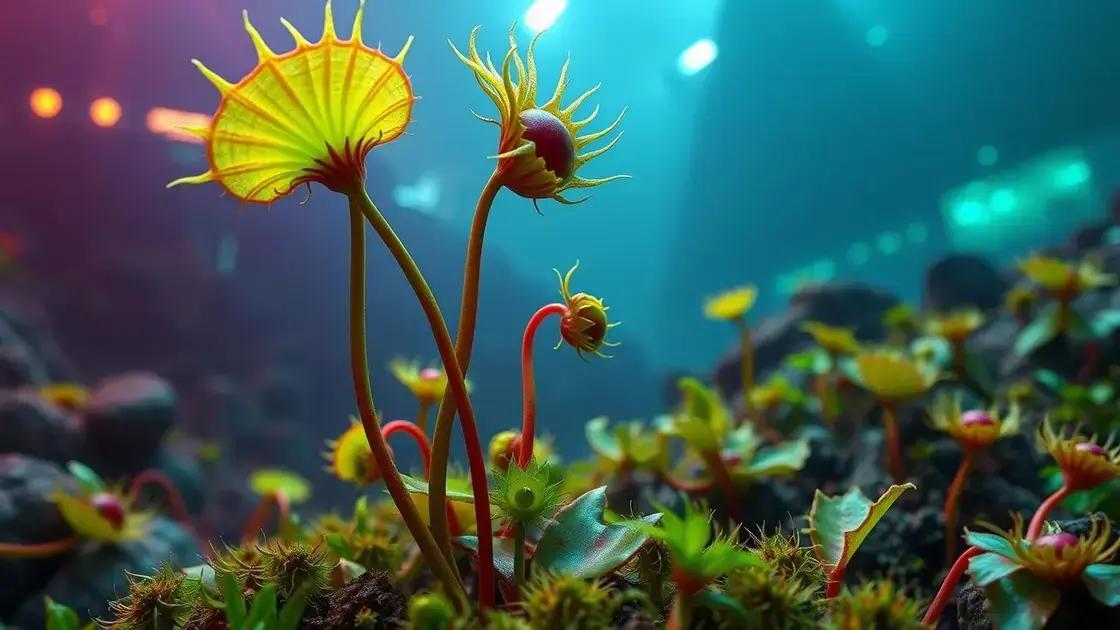How to Care for Venus Fly Trap Plant: 7 Expert Tips for Thriving Growth
How to care for venus fly trap plant is a question many plant lovers find themselves asking. If you’ve ever been captivated by these fascinating carnivorous plants, you might be wondering how to provide them with the care they need to thrive. The world of fly traps is both intriguing and intricate, requiring a deep dive into their unique needs. Keep reading to discover essential tips to help your venus fly trap flourish in its environment.
Table of Contents
ToggleEssential growing conditions for your venus fly trap
Essential growing conditions for your venus fly trap are crucial for maintaining a healthy and thriving plant. This fascinating carnivorous plant requires specific environmental factors to mimic its natural habitat effectively.
Light Requirements
- Venus fly traps thrive in bright, direct sunlight for at least 12 hours a day.
- Consider using grow lights if natural sunlight is insufficient.
Watering Needs
The watering needs of a venus fly trap are unique and require careful attention:
- Always use distilled water or rainwater; tap water can harm the plant.
- Keep the soil moist, but ensure it doesn’t become waterlogged.
Soil Requirements
Choosing the right soil is essential for your venus fly trap:
- Use a peat-based mix or a specialized carnivorous plant soil.
- Ensure good drainage to prevent root rot.
Humidity Levels
- Venus fly traps prefer high humidity levels, ideally between 50-70%.
- Consider using a humidity tray or misting the plants regularly.
| Growing Condition | Optimal Level |
|---|---|
| Light | 12+ hours of direct sunlight |
| Water | Distilled or rainwater, keep moist |
| Soil | Peat-based or carnivorous plant mix |
| Humidity | 50-70% |
Understanding these essential growing conditions for your venus fly trap will lead to healthier plants and more significant growth. Exploring indoor gardening techniques will provide further insights into optimal care tips.
Common care mistakes to avoid when nurturing fly traps

Common care mistakes to avoid when nurturing fly traps can make a significant difference in the health and longevity of your venus fly trap. By identifying and addressing these pitfalls, you can ensure vibrant growth and functionality.
Overwatering the Plant
- One of the most frequent mistakes is overwatering. Ensure the soil is moist but never soggy.
- Water only with distilled or rainwater, as these plants are sensitive to minerals found in tap water.
Insufficient Light Exposure
- Not providing enough light can lead to weak, unhealthy plants.
- Place the fly trap where it receives at least 12 hours of bright, direct sunlight.
Using Incorrect Soil
Choosing the wrong soil mix is another common mistake:
- Regular potting soil can retain too much moisture and harm the roots.
- Opt for a peat-based or carnivorous plant mix to ensure proper drainage.
Neglecting Seasonal Changes
- Venus fly traps have a dormancy period in winter. During this time, reduce watering and provide lower light levels.
- Ignoring this natural cycle can weaken the plant.
| Mistake | Impact on Plant |
|---|---|
| Overwatering | Root rot and plant health decline |
| Insufficient light | Weak growth and poor trap development |
| Wrong soil type | Soil compaction and drainage issues |
| Neglecting dormancy | Overall plant weakening |
By being aware of these common care mistakes when nurturing fly traps, you set your plant up for success. For further insights on proper soil mixes and care, exploring indoor gardening techniques can provide valuable tips.
Tips for fertilizing your venus fly trap safely
Tips for fertilizing your venus fly trap safely are essential for promoting healthy growth without harming this unique plant. Proper fertilization encourages robust trap formation and overall vitality, but it must be executed with care.
Understanding Nutritional Needs
- Venus fly traps do not require heavy fertilization due to their natural diet of insects.
- Use a balanced, diluted fertilizer specifically designed for carnivorous plants.
Choosing the Right Fertilizer
When selecting fertilizer, consider the following:
- A liquid fertilizer is often best for venus fly traps.
- Look for a fertilizer with a lower nitrogen content, such as a 1-1-1 ratio, to prevent damage.
Application Frequency
Proper timing is vital when fertilizing:
- Fertilize every 4-6 weeks during the growing season (spring and summer).
- Reduce or eliminate fertilization during the dormancy period (fall and winter).
Dilution and Method of Application
- Always dilute the fertilizer to half the recommended strength to prevent root burn.
- Apply the fertilizer directly to the soil, avoiding the traps to minimize any potential harm.
| Fertilization Aspect | Recommendation |
|---|---|
| Type of Fertilizer | Liquid, low nitrogen (1-1-1 ratio) |
| Application Frequency | Every 4-6 weeks during growing season |
| Dilution | Half the recommended strength |
| Method | Apply to soil, avoiding traps |
By implementing these tips for fertilizing your venus fly trap safely, you’ll foster a thriving and robust plant. For more insights into nutrient management and soil selection, exploring indoor gardening techniques can provide valuable recommendations.
In conclusion
Caring for your venus fly trap is a rewarding experience that requires attention to its unique needs. By understanding essential growing conditions, avoiding common care mistakes, and applying safe fertilization techniques, you can foster healthy growth and vibrant traps. Remember that proper light, watering, and soil choices are critical components for success. For even more insights and tips on enhancing your indoor garden, stay curious and keep exploring the fascinating world of carnivorous plants.

